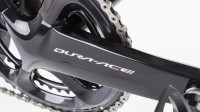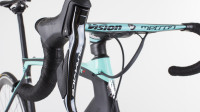If you are following one of the British Cycling Training Plans, commuting or simply cycling for pleasure, an uncomfortable saddle can quickly turn an enjoyable ride into sheer misery. Although there are a number of steps you can take to prevent saddle soreness, finding a saddle that suits you is without doubt the most effective. Follow these tips to find your perfect perch.
Don’t settle for stock
If you buy a complete bike off the peg or even second hand, don’t just stick with the saddle it came with. It could potentially suit you but, if after a few rides, it doesn’t feel right, start looking for a new one. Once you find a make and model of saddle that suits you, it could be worth buying a few. There is nothing worse than finding your perfect saddle, only for it to be discontinued.
Try before you buy
The best policy is to try as many saddles as possible before you buy one. Many shops offer this service, but it is also worth asking friends and club mates if they have any saddles they recommend that you could try.
Wide and soft doesn’t mean comfy
At its widest point, a saddle only has to be as wide as your sit bones, the bony prominences on your buttocks. Any wider is pointless and is likely to lead to rubbing, chafing and soreness. Measuring the distance between your sit bones and adding 2 cm gives a good starting point for the width of saddle you will need.
Plush padding and gel covers may seem like a good idea but they can actually cause more soreness rather than prevent it. A soft saddle encourages you to sit back in the saddle and put more weight through it. It will deform creating more contact, which can lead to increased soreness and, as it squishes under your sit bones, that material has to go somewhere and potentially leads to other hot spots developing.
It is far more important that a saddle is supportive and, if anything, slightly firm. Comfort can be taken care of with decent shorts and chamois cream.
Length and shape
Length and shape of saddle is very much dependent on your riding position and cycling position. For time trials or if you have an aggressive position on the road, a longer nosed flatter saddle will allow you to get low and forwards. For longer road rides, or if you have a more upright position, a shorter saddle with more of a curve may be appropriate.
Weight and material
Don’t get hung up about the weight of a saddle. A super light titanium railed saddle won’t make you any faster if, after a few hours, you can’t sit on it. Arguably carbon or titanium railed saddles may be marginally more forgiving than steel but whether this justifies the additional spend is up to you. It is worth remembering that the basic shape of a saddle is usually consistent through a range regardless of price or materials used.
Gender specific
Men and women have different anatomies which have to be taken into account when choosing a saddle.
With wider hips and a profoundly different pelvic anatomy though, the saddle demands of female riders are very different to men. Many cut-out designs are marketed as female specific but in reality are just modified male designs. Trauma and inflammation of the labial tissues is a fairly common issue in female riders. Many cut-out saddle designs will alleviate pressure on the inner labia but then transfer it to the outer labia instead. If left, the inflammation and swelling can become serious, make the area more prone to further damage and, due to adopting unusual positions on the saddle to try to alleviate the discomfort, can lead to secondary injuries to the back or knees.
For men, although saddle soreness is unpleasant, it is a minor inconvenience compared to the far more serious issue of erectile dysfunction. Compression of the dorsal penile nerve can produce a sensation of penile numbness. This should alleviate immediately when you shift position, stand out of the saddle or finish your ride. If it lingers, it should be taken extremely seriously as it can be symptomatic of the development of erectile dysfunction. Excessive pressure can also damage and lead to infections of the urethra. This is characterised by burning or stinging when going to the toilet after a ride or, in severe cases, blood in the urine. Both of these symptoms should be acted on immediately and medical advice sought. Saddles with central cut-outs can help to alleviate both of these conditions.
Check your fit
If you just can’t find a saddle to suit, there might be an issue with another area of your bike fit. Both saddle height and reach can lead to discomfort so are worth checking. A leg length discrepancy can also manifest as saddle discomfort. A DIY bike fit can give you a good starting point but a professional Rëtul fit, using dynamic motion capture of your pedal stroke and a physio assessment, will be able to identify any more complex issues.
Embrace technology
A number of saddle manufacturers have developed fitting systems which factor in sit bone measurements, pressure sensor data, rider weight and flexibility to determine an optimal saddle. Obviously the results are specific to their own range of saddles but, if you are struggling to find a saddle that fits, it could be worth trying.
Breaking in
Some more traditional saddle brands do require a breaking in period but modern designs should be good to go straight out of the box. If the design is significantly different from your old saddle, it might feel a bit strange initially but this novel sensation should diminish after a few rides if the saddle is correct. The illusion that a saddle is “breaking in” is often coincidental and is actually down to the rider simply getting fitter. As you get stronger, you put more weight through the pedals, less through the saddle and should suffer less discomfort.
Don’t give up
Saddle discomfort and trying to find a saddle that alleviates it can be really frustrating. However, persevere, as there is a saddle for everyone. Don’t be afraid to try alternative saddle designs, such as those with split noses, and keep up to date with new brands and models on the market.














